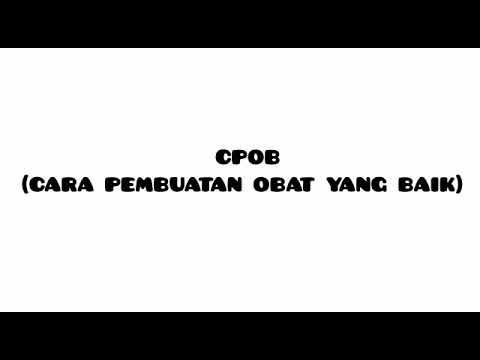MK Cara Pembuatan Obat Tradisional Yang Baik
Summary
TLDRThis video explains the process of creating high-quality traditional medicine (CTOTB). It covers the essential steps involved, including sourcing raw materials, ensuring quality control, and using proper manufacturing practices. Key topics include the importance of hygiene, equipment sterilization, and quality oversight to guarantee safety and effectiveness. The video also highlights the necessary documentation, the roles of personnel, and the regulatory framework for producing traditional medicine. Emphasis is placed on the significance of building design, storage conditions, and ongoing quality assessment to maintain product integrity.
Takeaways
- 😀 Traditional medicine is essential for maintaining and recovering health, and it should be safe, beneficial, and of high quality.
- 😀 CPOTB (Good Manufacturing Practice for Traditional Medicine) involves a comprehensive process of preparation, processing, and quality control to ensure safety and efficacy.
- 😀 Raw materials should be thoroughly checked for authenticity, quality (using organoleptic or laboratory testing), and properly stored.
- 😀 The processing stage includes steps like weighing, sterilization of equipment, and documentation of each procedure to maintain traceability.
- 😀 Quality control is crucial for ensuring that products meet all necessary standards. It includes testing, stability checks, and handling complaints or product returns.
- 😀 Proper building design and facilities are essential for cleanliness, preventing contamination, and supporting efficient operations.
- 😀 The construction of production facilities should minimize contamination risks, be easy to clean and maintain, and include proper waste disposal systems.
- 😀 Documentation is a vital aspect of the process, helping track the production history of each batch and ensuring continuous improvement.
- 😀 The stability of traditional medicines must be tested before and after market release. Factors like raw material quality and storage conditions impact stability.
- 😀 Proper storage of products, including quarantine areas for testing and final approval, is necessary to ensure that the medicines remain safe and effective.
Q & A
What is the main purpose of traditional medicine production?
-The main purpose of traditional medicine production is to maintain, treat, and restore mental and physical health, ensuring that the medicine is safe, beneficial, and of high quality.
What is CPOTB, and why is it important?
-CPOTB (Cara Pembuatan Obat Tradisional yang Baik) refers to the Good Traditional Medicine Manufacturing Practice. It is important because it ensures that traditional medicines are produced in accordance with safety, quality, and regulatory standards.
What are the key factors in ensuring the safety and quality of traditional medicines?
-Key factors include proper raw material selection, thorough testing, sterilization of equipment, controlled production processes, and strict quality control at all stages.
What is the significance of raw material preparation in the production process?
-Raw material preparation is crucial as it involves verifying the authenticity of plants, sorting, washing, drying, and testing the materials to ensure they meet regulatory standards before use.
What are the main steps in the traditional medicine production process?
-The main steps include raw material preparation, weighing, processing, packaging, storage, and ensuring that each step is documented and quality-controlled.
How is the quality of traditional medicine monitored during production?
-Quality is monitored through regular sampling, testing, and validation of materials, as well as evaluating stability and compliance with specifications to ensure the final product meets safety and efficacy standards.
Why is building design and cleanliness crucial in traditional medicine manufacturing?
-Building design and cleanliness are crucial to minimize contamination risks, ensure proper airflow and temperature control, and maintain hygiene standards to produce safe and high-quality products.
What is the role of the quality control department in the production of traditional medicines?
-The quality control department is responsible for inspecting and testing raw materials, in-process materials, and finished products to ensure they meet the required quality standards. They have the authority to accept or reject materials or products based on the test results.
What is the significance of proper documentation in the production of traditional medicine?
-Proper documentation helps track the history of each batch of products, ensures traceability, and provides transparency throughout the production process, making it easier to detect issues and maintain compliance.
How does the packaging process affect the stability of traditional medicines?
-Packaging plays a critical role in protecting the product from environmental factors such as air, moisture, and light, which could affect its stability. Proper packaging ensures that the medicine remains effective and safe throughout its shelf life.
Outlines

This section is available to paid users only. Please upgrade to access this part.
Upgrade NowMindmap

This section is available to paid users only. Please upgrade to access this part.
Upgrade NowKeywords

This section is available to paid users only. Please upgrade to access this part.
Upgrade NowHighlights

This section is available to paid users only. Please upgrade to access this part.
Upgrade NowTranscripts

This section is available to paid users only. Please upgrade to access this part.
Upgrade NowBrowse More Related Video

STANDARDISASI OBAT BAHAN ALAM (Part 1)

[DRAFT] CPOTB 2020 = PENGANTAR || Manajemen Industri Obat Tradisional (Eps. 1)

How Soy Sauce Has Been Made in Japan for Over 220 Years — Handmade

Pengertian CPOB, CPKB, & CPOTB

Pertemuan 2 - Digital Imaging - Raden Daniel Wisnu Wardhana

How to Make 3D Animation MOVIE with AI 🤖
5.0 / 5 (0 votes)